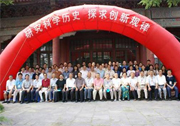| 英文摘要: |
This paper investigates the naming methods and translation features of the Chinese proposals for nomenclature of organic compounds. It argues that, as regards the naming methods, most people consulted the Geneva nomenclature to draft the Chinese terms for organic compounds. Motivated by compiling textbooks and “popularizing” “common education” for “primary and middle school children”, Yu Heqin built his terminology on common western terms in 1908. As regards the translation features, almost all proposals created new characters; and most proposals preferred associative or/and pictograph characters. The Nomenclature of Chemistry approved in 1932 established unified standard for Chinese chemical terms. It constructed the Chinese names for organic compounds according to the Geneva nomenclature. The forms of its new-coined characters were consistent with those of the existing Chinese characters and did not appear eccentric. Concerning the Chinese characters used for nomenclature, it boldly put forward the general principle that “in the choice of characters phonograms are preferred, associative characters come second, and pictographic characters are not valued.” |





